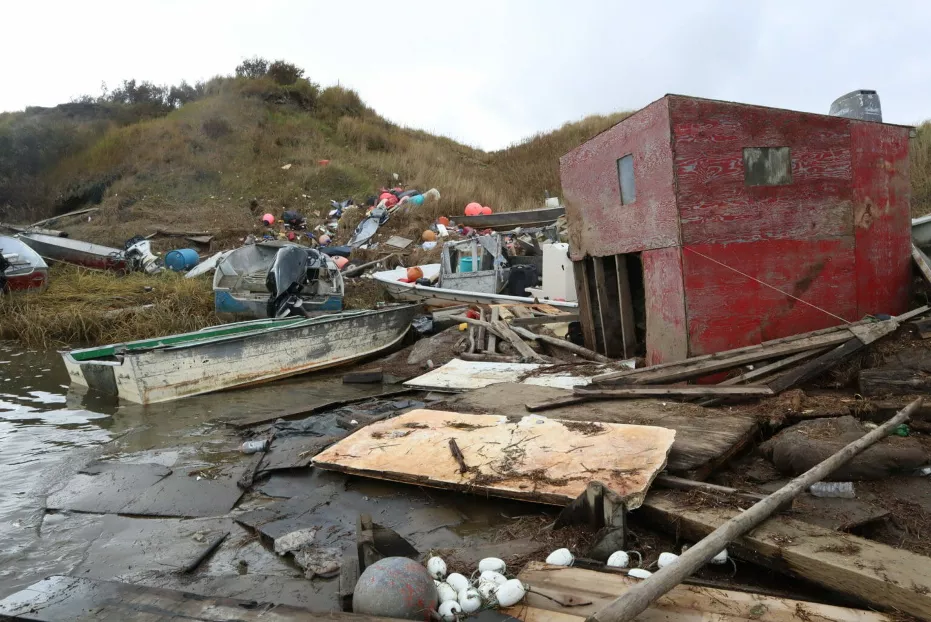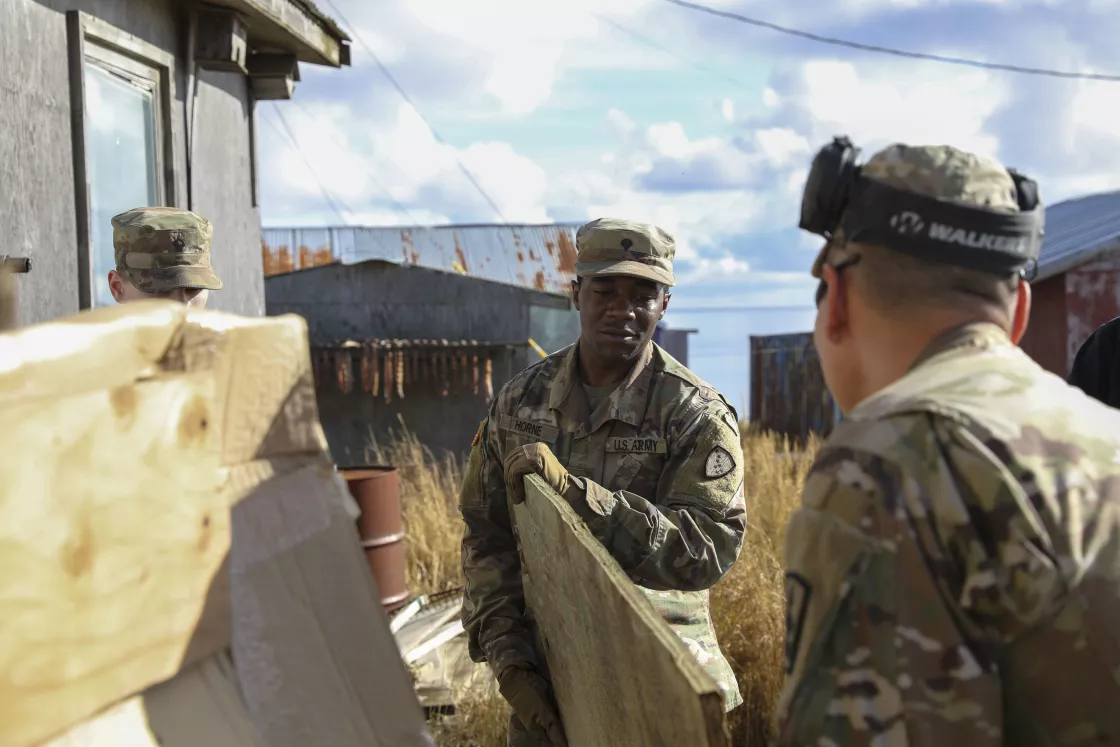By Agnieszka Gautier
Hurricanes form in the tropics, feeding on very warm ocean waters. Most of these rotating tempests eventually track northward, with some Atlantic Hurricanes making it as far as the Canadian Maritime Provinces. Hurricanes, however, never survive as far north as the Arctic Circle because as they move out of tropics, they weaken—either quickly losing their intensity after making landfall or when moving over colder ocean waters.
As tropical hurricanes enter the middle latitudes, they undergo a process known as Extratropical Transition. Still retaining plenty of heat and moisture, these morphed storms, which can be thought of as extratropical cyclones with an added punch, can sometimes reach southern Greenland, Alaska, and even Arctic latitudes of the North Atlantic. Hence, remnants of hurricanes enter the Arctic.
Hurricane, cyclone, or typhoon…which is it?
When tropical storms in the North Atlantic and the central and eastern North Pacific sufficiently strengthen to have sustained winds of at least 119 kilometers (74 miles) per hour, they are called hurricanes. When they form over the South Pacific and Indian Ocean, they are called cyclones. Typhoon is the term for storms in the northwest Pacific Ocean.
Whatever the name, their formation is the same. The ocean needs to be at least 27 degrees Celsius (80 degrees Fahrenheit) at the top 50 meters (165 feet) to ignite the system. This is why hurricanes start in the tropics toward the end of summer and into fall when ocean temperatures are at their peak. As a low-pressure system passes over the warm, humid tropical waters, it evaporates water from the ocean. Warm, moisture-laden ocean air rises, and then condenses and releases heat to the system, further dropping the pressure. In response, winds strengthen, bringing in even more moisture from the sides, and repeating the cycle of lowering pressure and strengthening winds further. Rainfall can be torrential.
According to the National Oceanic and Atmospheric Administration, a single hurricane can churn out about half as much energy as the electrical generating capacity of the entire planet, while cloud and rain formation from the same storm might release a staggering 400 times that amount.
High latitude impacts
In early September 2022, the remnants of Typhoon Merbok transformed into a northern Pacific extratropical cyclone, blasting western Alaska with hurricane-force winds and record-high storm surges. A few weeks later, the tentacles of Hurricane Fiona reached southern Greenland, leading to an unusual late season melt event over the southwest part of the ice sheet. As a hurricane, Fiona had previously ravaged Puerto Rico, cutting power to the island and other parts of the Caribbean before heading north.
Only a year earlier, in 2021, Hurricane Larry reached Newfoundland, before converting to a post-tropical cyclone that dumped snow on Greenland with wind gusts up to 145 kilometers (90 miles) per hour. Before Larry, Hurricane Noel struck Greenland in 2007. Other former hurricanes making landfall or brushing by Greenland in recent decades include Erin in 2001, Bertha in 1996, Luis in 1995, and Allison in 1995.
Former hurricanes that move into higher latitudes, like the 2022 western Alaska storm, expose populations at risk with energy grids and infrastructure not designed to take their impacts. High winds and ice-cold surges further erode already-sensitive coastlines. After Merbok receded, the Alaskan coastal towns of Skaktoolik, Kotlik, Scammon Bay, and Newtok reported dozens of homes flooded. Some homes were knocked off their pillars, a necessary foundation for building on permafrost, or frozen ground, to avoid thawing the soil beneath. Roads were washed away. Some communities lost over 30 meters (100 feet) of shoreline from erosion, according to the Alaska Department of Transportation. In total, the storm flooded 1,600 kilometers (1,000 miles) of Alaska’s coastline—equivalent to the distance between New York City and Tampa, Florida.
Are changes afoot?
Since the 1980s, tropical storms appear to have been drifting farther poleward in the Northern and Southern Hemispheres. A study from 2014 called The Poleward Migration of the Location of Tropical Cyclone Maxime Intensity found that the center of tropical storms has been moving at about 57 kilometers (35 miles), or one-degree of latitude, poleward per decade. This expansion is in sync with the observed expansion of the tropics—a shift along their edge towards high latitudes—over the same period. Fringing the lush interior of the tropics with its high temperatures and heavy rainfall is a band of hot and parched land. Since 2005, scientists have noticed that these arid strips are expanding toward the poles. Ocean warming caused by climate change appears to be driving tropical expansion.
As the Arctic warms faster than other regions of the planet, its warming waters may also coax tropical storms farther north, though more research is needed to understand the complex weather relationship between the tropics and the fast-changing Arctic.
References
Kossin, J., K. Emanuel, and G. Vecchi. 2014. The poleward migration of the location of tropical cyclone maximum intensity. Nature 509, 349–352. DOI:10.1038/nature13278.
Yang, H., G. Lohmann, J. Lu, E. J. Gowan, X. Shi, J. Liu, and Q. Wang. 2020. Tropical expansion driven by poleward advancing mid‐latitude meridional temperature gradients. Journal of Geophysical Research: Atmospheres. DOI:10.1029/2020JD033158.


